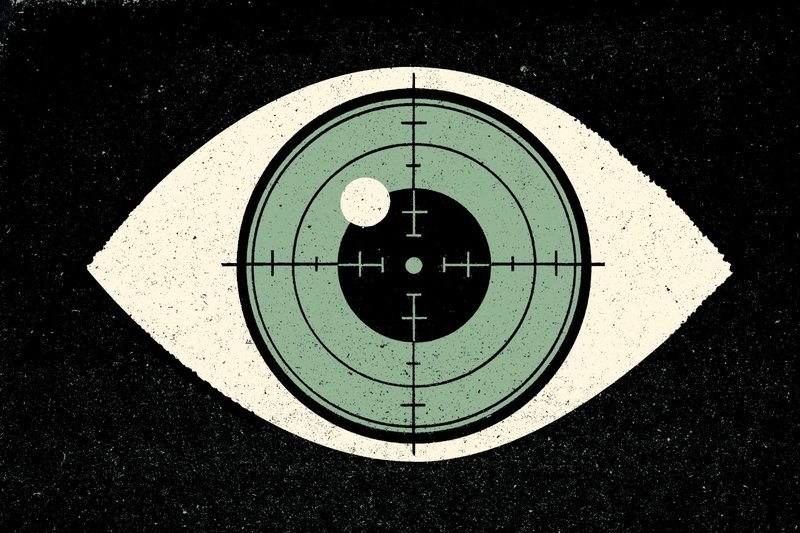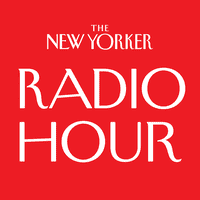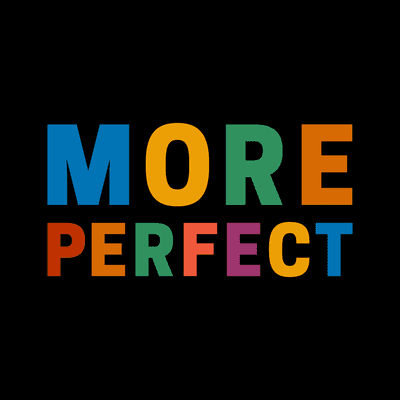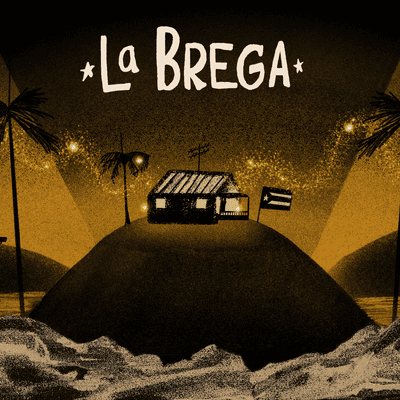What Makes a Mass Shooter?

[music]
Willie Edwards: I'm Willie Edwards, pretty much a lifetime resident of Uvalde, Texas. I've lived here ever since I was 1, and I'm proud to say I'm 70, now. I was actually in a restaurant, 20 miles from town with a friend and his wife. My friend had back surgery today; he's doing well. As we were leaving the restaurant, a friend of mine, former teacher said that she just got a text that there was an active shooter at Robb, that maybe a teacher had been killed. My wife and I just drove towards Robb Elementary. It became obvious that it was something really bad was going on, lots of ambulances.
Then the tolls started coming in, 14 children dead, 18 children dead, 19 children dead, 2 adults, 3 adults. We're just learning what all's involved, who all's involved. I just found out, my wife has a former student whose daughter was one of the ones killed. The last picture they took of her was holding her certificate for being in the all A/B Honor Roll. They had an awards program yesterday at Robb Elementary. To see that beaming face with all that possibility, and hope, and joy, and now it's not here anymore is pretty damn painful. It's going to be painful for a while.
I had a cousin that texted me, and it was yesterday, and was like, "Do you know anybody that's been affected?" [chuckles] I love my cousin, but that was one of the stupider thing I've ever heard her ask me because we're all affected. When I heard Kim, somebody that I know personally, that I've seen and know is such a joyful person, to know that her daughter, that I know she loved as much as anybody's ever loved her daughter was dead, I'll never get over that moment.
Her best friend is the editor of the paper and they could go in and hug her and shake in each other's arms and cry. There's nothing that can be said, nothing. You just show up. The greatest thing about Uvalde is the people. This community has meant so much to me. My parents died when I was young, and this community held me up. I can tell you that today is the saddest day that Uvaldeans hopefully, will ever feel. Thank you. That's all I got.
Rachel Monroe: I'm so sorry.
Willie Edwards: No. I know you are. I appreciate.
[music]
David Remnick: That's Willie Edwards. He spoke with our contributor Rachel Monroe, who's reporting for The New Yorker from Uvalde, Texas. Now, on Tuesday of last week, I called the two researchers who wrote a study of people who commit mass killings. The book is called The Violence Project, and they run a research institute on the subject. I wanted to talk with them about the shooting in Buffalo because it seemed to me that after a week, a stunning horror, was already being forgotten, one more mass killing on a long historical list. That was the middle of the morning on Tuesday, the 24th.
We recorded our conversation, and before my producer had even edited the interview, a teenager walked into an elementary school in Texas, carrying an assault rifle. Without a doubt, politicians need to act to reduce gun violence, but we also need, all of us, to understand better what's going on. Why the number of mass killings in America has increased like this? What motivates someone to target children or grocery store customers at the cost of their own life, or their life outside of prison? I got back on the phone later in the week with the scholars who run The Violence Project, James Densley of Metropolitan State University, and Jillian Peterson of Hamline University.
Jillian and James, I really don't know what to say. Two days ago, we were talking about the horrible shooting in a grocery store in Buffalo, and now here we are, again, in the aftermath of another horrific shooting, this time in Texas. It's beyond reckoning. You've studied mass shooters stretching back to the University of Texas, so-called The Tower Shooting in 1966. When you look at the events of the past two weeks, what are you seeing that we don't?
Jillian Peterson: I think I see the same story playing out over and over and over and over again. It follows the same trajectories, the slow build over time, the hate, the online radicalization, the leaking plans and telling people they're going to do it, the easy access to firearms, the young 18-year-old kid. It just is the same story over and over again. It feels like we really should be able to take action at this point.
David Remnick: Let's take our time with this. Take us through what typically leads someone to do something like this, whether it's in a grocery store, or a school, or wherever?
James Densley: We started this project building a database just to track the numbers of these mass shootings, but then we started to dive deeper into the life histories of the shooters themselves. Everything from their childhood, their mental health history, how they got access to firearms, their motivations. We have interviewed perpetrators. We've interviewed families who've lost loved ones. We've gone back and spoke to survivors of the shootings, people who were there, eyewitnesses, first responders. We see this trajectory toward violence. It's very common among these mass shooters. It often starts with some sort of early childhood trauma.
These are individuals who have experienced something in their lives that has never really been resolved. Related to that, at some point, they reach these identifiable crisis points. This feeling overwhelms their usual your coping mechanisms, and they get to a point in life where they no longer care if they live or die. It's often a suicidal crisis, but it's also an angry crisis. There's somebody there to blame. They're trying to make sense of their lives. In doing so, they then look for models of behavior. They start to research other mass shooters, other people who felt just like them.
They start to identify with those individuals and realize, "Well, maybe it's not me that's the problem. Maybe it's them that's the problem. Maybe society is to blame. Maybe it's Black people to blame. Maybe it's my school teachers to blame." Whoever it is that I can focus on. Often during that point, by the way, people are posting on social media, posting online. They're talking about doing this. The warning signs are all there.
David Remnick: Why does this happen in the United States with real frequency, and when it happens abroad, it is a freak, an outlier? What distinguishes, to use that word, the United States?
Jillian Peterson: I think there's a couple of answers to that question. The first one just being how easily we can access firearms, and the sheer number of firearms is really different. I was talking to, I believe it was the BBC yesterday, and an international reporter, and they could not fathom the fact that we run our children through drills in case this happens. That was such a foreign concept to them. Their minds were blown that that's the extent that which we've normalized this in America.
For me, it was really this moment of like, "My God, what are we doing? We just accepted this." I think there's also the social contagion piece where one happens, somebody gets a lot of fame and notoriety for it. We do nothing. We make no policy changes, and then another person comes right behind them. They do tend to cluster like this, which is why we weren't particularly surprised to see another horrific mass shooting right on the tails of Buffalo.
James Densley: What's also interesting about the rise of mass shootings is it maps onto a rise in what we also call deaths of despair. Deaths of despair, these are deaths, suicides, drug and alcohol overdoses. These are at record highs right now in the United States, as are mass shootings. We ask ourselves, are mass shootings a form of death of despair? It's something we write about in the second chapter of our book where we're trying to explore, what is it that makes America different?
Yes, it's prevalence of firearms, but there's something deeper. There's something deeper in American culture and American society, or lack of a social safety net. The way in which we are organized as individuals in the society as opposed to a collective. These deaths of despair and these mass shootings, they seem to be related.
Jillian Peterson: That was one thing that struck me early on is I hadn't thought of these mass shootings as a form of suicide. Of course, it's a horrific homicide but the perpetrator goes in with no escape plan. It's never like that I'm going to leave and race for the border. It's I'm going to either be killed, kill myself, or spend the rest of my life in prison. That's the goal. That's the plan. What we can learn from suicide prevention, I think can teach us about how to prevent some of these mass shootings. We haven't connected those two things but when we think of these as suicides, in addition to being homicides as a form of death of despair, it actually opens up a lot of new prevention ways forward.
David Remnick: Now, the Buffalo shooter was completely up to his hips in white supremacy material online. A believer in replacement theory, which is the idea that political demographic genocide is being perpetrated on white people. Now, you say that ideology is not at the root of mass shootings. How can that possibly be true in the case of something like what happened in Buffalo?
James Densley: I think what we try to think about here is, what is it that makes somebody susceptible to that type of a conspiracy theory and to that type of propaganda in the first place? Nobody who's living a fulfilled life finds this material compelling, so much, that it would motivate them to want to commit murder. Now, that material may be gave that person some sort of meaning, and it perhaps facilitated the crime that followed it. It gave them a pathway to move forward. We don't think of it necessarily as quite as causal, as sometimes is referenced in the popular media because we often search for motive.
Then when we find that motive, we're able to put these mass shooters in a little box. We're able to say, "Well, that was a terrorist, or that was a hate crime, or it was a gang member," or whatever brand we can give it. We make it sound like, "These are these scary monsters that aren't actually our children, our community members, people that we know, our neighbors." That prevents us from looking out when the warning signs are abundantly clear. When somebody is there on social media posting this stuff, somebody needs to pay attention. If we absolve ourselves of that responsibility, this is going to keep happening, again and again, and again.
David Remnick: Who's that somebody?
Jillian Peterson: It's everyone. I would say, it's everyone from family members to friends, teachers, police, co-workers. What we see time and time again, is that these perpetrators tell people they're going to do this. They post about it. School shooters, in particular, it's over 80% of them tell other people. We call it leakage. The most common people they tell is their classmates. We've studied school shootings where 50, 60 kids knew what was going to happen, and nobody told any adults in the building.
Then even when adults do get told, we're not sure what to do with that information. The police check it out. They say, "Oh, maybe he doesn't have guns right at this moment. There's nothing we can do." Then we move on, rather than having systems in place at the school to say, "This is a kid who's not okay. This is a kid who has to be connected with long-term services with continual follow-up."
David Remnick: I want to ask specifically about the shooting in Texas, the targeting of kids, of children. It's incomprehensible, and yet it's not unique to the Uvalde shooting. What could possibly motivate a person? Even a person who's experienced trauma, who was suicidal, who had been radicalized, indoctrinated, what would drive a person to kill kids in grade school?
Jillian Peterson: It's unreal. I'm a parent of three kids. My oldest is in 4th Grade. This has just been so gutting. What's different actually about this shooting is that when we look at school mass shootings, over 90% of them typically target their own school, either their current school or a former school. They typically are angry at their classmates, and at their teachers, and at their peers. Targeting an elementary school, of course, it happened in Sandy Hook, but it is very rare.
It's possible that something happened to him in elementary school that he still carries anger from, I think that will emerge. What we do know is, sadly, when you target elementary school kids, it makes huge headlines. You make the history books. It could be that fame and notoriety seeking.
David Remnick: That's the point, the fame and notoriety of killing children?
Jillian Peterson: We see that. It's the wanting to be known for something and doing something like this in a way that you are never going to be known in life. It is. It's wanting to make the headlines, and have your face everywhere.
David Remnick: Now, this may be outside the scope of your scholarly research. I must say it stuns me that you're really the first ones to come along and do research of this kind and at this depth considering the problem involved here. When I listen to Ted Cruz, the Senator from Texas. When I listened to Greg Abbott, the Governor of Texas talking about this, rushing to the fore saying, "We should not come to any untoward political conclusions." Yet again, the same cycle of rhetoric. What conclusion do you draw about our politics?
Jillian Peterson: Well, one thing we've tried really hard to do in our work is come at it in this nonpartisan really data-driven ways. When we come up with solutions, when we say universal background checks, when we say red flag laws, when we say permit to purchase or raise the age limit, those aren't political statements, those are data-driven. That is what the data tells us; those things will save lives. There's nothing political about that; it's simply the science. Many countries have shown us the way. We have the evidence. The idea that that is political, that to me is the bothersome piece of this.
James Densley: We try to organize solutions to mass shootings in our book on three levels. One at the individual level which is, "What could I do tomorrow as a regular citizen to try and prevent a mass shooting?" That might just be as something as simple as, if I have a gun in the home, lock it up, safe storage. What can we do as institutions, at schools, workplaces to prevent a mass shooting? Can we do more to be attuned to the behavioral warning signs that somebody is on the pathway to violence? Can we intervene earlier? Can we get them connected to the help that they need?
Then there is the societal piece. I think that's what we're talking about here. That's where a lot of the effort has often been placed is talking around how do we get politicians to act? The challenge is we don't want that to hold us up, to start to make small steps that can actually make a big difference. That's what our research is telling us. We can't grow numb to this.
David Remnick: I swear to God, it seems that we have. After Charleston, there was an outpouring of emotion. It went on for days. There were story after story after story. After Buffalo, after two days, it was gone. Now maybe with the killing of children, it'll last a few days longer, and then it'll be gone. What changes the damn equation?
Jillian Peterson: I'll be honest, I wish I knew. I think we've done this research. We've written the book. We know the pathway forward. It is there. We know what we need to do to stop this, and we choose not to do it. We've been doing it wrong for a long time. For a long time, we thought, "Okay, let's harden our schools, and let's arm our teachers, and let's run our kids through drills." That all failed. That was the wrong approach. We now know we need to soften our schools. We need to make them welcoming and open, and we need to get guns out of there. Now we just need people to do it. I don't know how we keep ourselves from getting numb, and how we stay this sad, and this angry to push this through.
[music]
David Remnick: James Densley teaches Criminal Justice at Metropolitan State University in Minnesota and Jillian Peterson teaches Forensic Psychology at Hamline University in Saint Paul. Keeanga-Yamahtta Taylor wrote about the attack in Buffalo, New York just a couple of weeks ago, when a white gunman killed 10 people at a grocery store in a predominantly Black neighborhood in that city. She's a regular contributor, as well as a historian at Princeton University. Keeanga I just spoke with Jillian Peterson and James Densley, who are researchers who have made a big study of mass shootings.
They've concluded that while bigotry and prejudice are motivating factors in many of these shootings, they're not necessarily the root cause. They suggest that a person first reaches a personal crisis point even a suicidal one, and that crisis drives them toward ideology and finding ideologies on the internet or elsewhere in their lives. That in some sense, mass shootings are first and foremost about hopelessness and despair, and that leads to the bigoted ideas. What do you make of that?
Keeanga-Yamahtta Taylor: In some ways it makes sense. I had the unfortunate task of reading through the manifesto of the Buffalo shooter, but also the messages that were posted on the Discord platform. You could see that, yes, this is actually an 18-year-old, but also that this was an anguished person who talked about suicide and seemed to be in trouble and deep despair. I know that in this country, in particular, we're not supposed to talk about that. This is a hardened killer. We can't talk about him as a teenager or a child. He's a 18-year-old man but I don't know where that takes us.
David Remnick: You're from Buffalo, and you must have taken this; especially your dad is still there who's a scholar professor. What was your initial reaction to this and how does the Buffalo-ness of this story figure into everything?
Keeanga-Yamahtta Taylor: I think we, me, and my wife, and son, had gone out for the morning and we'd come back in the afternoon. We were sitting around. I looked at my phone like we always do before we do anything, or when we finish something. The banner came across at that point, it was eight shot in Buffalo grocery store. I thought it was unlikely that my father is not going out shopping anywhere, but for my stepmother, most certainly. This was one mile from my dad's house. There was about five minutes of panic where they got back in touch within five minutes. Then I immediately shifted course to this was a white supremacist.
It was the same feeling that I had when I initially heard the Charleston shooting. I immediately thought, "There is a white person involved with this." There many things to say about this. I do think the fact that he wanted to find the greatest concentration of Black people that were nearest to him, and was able to type that information in and quickly come to this area in Buffalo, just really tells you a lot about the conditions in the city that lead to a zip code where 78% of the residents are African-American.
People are angry about the way that this story is being framed, which is to say that there has been a lot of talk about, "We won't let this white supremacist divide our city. Buffalo's nickname is the city of good neighbors." I think that people are disturbed because there's a way in which Buffalo is not a united city. Buffalo is one of the most segregated cities in the United States meaning that Buffalo is not exactly the city of good neighbors. It might be the city of hostile neighbors.
David Remnick: Now, Keeanga, there's no way for me to quantify this. It's an impression, and maybe you think I'm wrong. It seemed to me that when Charleston happened, there was an enormous storm of publicity, journalism, demonstrations. President Obama, of course, went down for the funerals. I find that the Buffalo story has passed. It's almost as if racialized mass killing has become not so extraordinary.
Keeanga-Yamahtta Taylor: I saw this poll this morning, 60% of Trump supporters think that the "great replacement theory" is real. The racial dynamics have dramatically changed since Charleston, but the second part of this is I think that we have become habituated to mass shootings. I remember having this sense after the Vegas shooting in 2017. This was massive, massive carnage, and it felt very quickly that we had moved on. Someone said it and I can't remember who, but that "Once the United States deemed itself powerless to respond to the mass murder of 1st Graders in Connecticut, then what would compel a reckoning around gun violence?"
David Remnick: Keeanga-Yamahtta Taylor, thank you so much.
Keeanga-Yamahtta Taylor: Thank you.
[music]
David Remnick: Keeanga-Yamahtta Taylor is a Professor of African-American Studies at Princeton University. You can read her on the Buffalo attack and much more at newyorker.com
[music]
Copyright © 2022 New York Public Radio. All rights reserved. Visit our website terms of use at www.wnyc.org for further information.
New York Public Radio transcripts are created on a rush deadline, often by contractors. This text may not be in its final form and may be updated or revised in the future. Accuracy and availability may vary. The authoritative record of programming is the audio record.





